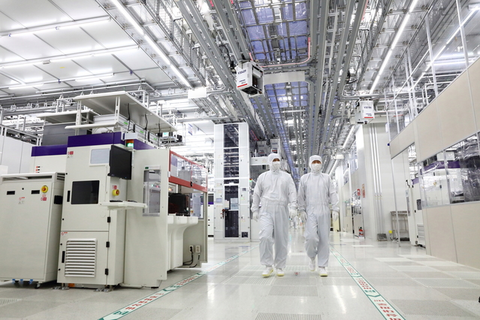“South Korea Should Also Spend 5% of Its GDP on Defense,” Trump-Style Security Bill Becoming Visible
Input
Modified
U.S. Applies NATO’s New Standard to Asia South Korea Spent 2.8% of GDP (USD 48 billion) Last Year—U.S. Now Asking for Nearly Double Increasing Allies’ Burden to Enforce ‘America First’ Doctrine

As tensions escalate across the Asia-Pacific, the U.S. is once again calling on its allies to shoulder a greater share of the defense burden. This time, the request is explicit and far-reaching: Washington wants countries like South Korea to boost their defense budgets to 5% of GDP—a figure that significantly surpasses previous expectations and, if adopted, would reshape not only military financing but national budgeting priorities. With former President Donald Trump back at the forefront of U.S. security rhetoric, this demand reflects his administration’s revived “America First” strategy and a pivot in burden-sharing diplomacy that leaves South Korea facing high-stakes decisions.
A Global Benchmark Finds a New Front in Asia
On June 19, the U.S. Department of Defense unveiled a revised global defense spending benchmark that is now being directed at key Asian allies. In a statement delivered by Pentagon spokesperson Sean Parnell, the department echoed comments made by Secretary of Defense Pete Hegseth at a Senate hearing and the Shangri-La Dialogue in Singapore, declaring that NATO’s evolving commitment to spend 5% of GDP on defense should now apply to South Korea, Japan, and others.
Parnell emphasized that “our European allies are setting a global standard for our alliances—particularly those in Asia,” referring to the new 5% target as a unified benchmark. He cited regional threats—China’s aggressive military buildup and North Korea’s persistent nuclear and missile provocations—as compelling reasons why Asia-Pacific allies must accelerate defense spending.
This shift in U.S. policy is not occurring in isolation. NATO, responding to the fallout from Russia’s invasion of Ukraine in 2022, has tentatively agreed to raise its own defense spending to the 5% threshold. NATO Secretary-General Mark Rutte recently confirmed that a full consensus is likely at the July summit. Under this proposed framework, at least 3.5% would go directly toward military readiness and equipment, with the remaining 1.5% covering security-related infrastructure and investments. Rutte made it clear: this new goal is meant to align with the current U.S. defense budget, which stands at 3.38% of GDP, and to ensure NATO allies can independently field the capabilities they need.
Hegseth, speaking at the Senate Armed Services Committee’s hearing on the FY2026 defense budget, was blunt in his assessment. He called it “nonsensical” to demand that European nations meet the 5% GDP target while allowing Asian allies—who face equally grave threats—to spend far less. His remarks clearly signal a coordinated campaign by the Trump administration to embed this new benchmark across both transatlantic and Indo-Pacific alliances.
South Korea’s Strategic Dilemma and Budgetary Reality
Despite its strategic alignment with the U.S., South Korea finds itself in a vastly different position from NATO members. For the 2025 fiscal year, Seoul has earmarked approximately USD 44.6 billion for defense, representing 2.32% of its GDP. To meet the 5% benchmark, South Korea would have to nearly double its defense budget to over USD 72 billion, a leap that experts consider fiscally and politically impractical in the short term.
Defense Secretary Hegseth has suggested that the 5% figure should encompass not only direct military spending but also “defense-related investments.” Even with this expanded definition, experts in Seoul caution that achieving such a target would necessitate significant cuts in other areas of public expenditure, potentially triggering intense domestic political pushback. As a mid-sized economy still heavily invested in welfare, education, and industrial innovation, South Korea cannot easily reallocate funds at this scale without major structural changes.
Moreover, the issue is not only fiscal—it is diplomatic. Many foreign policy analysts warn that, having publicly introduced this benchmark, the Trump administration will likely pressure South Korea to present not only a larger defense budget but also a clear implementation timeline. The possibility of a formalized request emerging during future bilateral or multilateral talks is growing.
This challenge is compounded by anticipated demands that Seoul increase its contribution to the stationing costs for U.S. Forces Korea (USFK), which currently amount to roughly USD 1 billion. Under Trump’s leadership, U.S. policymakers are expected to take a more assertive stance, tying broader alliance costs—including U.S. military presence, regional deterrence operations, and joint drills—to South Korea’s overall defense expenditure. This potentially places Seoul at the center of a broader redefinition of alliance burden-sharing, extending far beyond the immediate defense budget debate.

“America First” and the Recalibration of Alliance Roles
At the heart of this renewed pressure lies Donald Trump’s enduring “America First” doctrine, a worldview deeply skeptical of deploying American resources and personnel to defend foreign nations, even traditional allies. From the beginning of his presidency, Trump has repeatedly accused NATO and Asian partners of “free-riding” on U.S. security guarantees while contributing inadequately to collective defense.
The Trump administration’s interim National Defense Strategic Guidance, issued in March, underscores this ideological shift. The document prioritizes preparations for a Chinese invasion of Taiwan and the defense of the U.S. homeland. In contrast, it assigns responsibility for dealing with other regional threats, including those from North Korea, to America’s allies. In effect, the U.S. is repositioning itself not as a global police force but as a security broker—ready to engage, but only if its allies match its commitments in both rhetoric and resources.
This context is critical to understanding the 5% GDP demand. It is not merely a call for greater defense budgets; it represents a strategic recalibration of how the U.S. defines its alliances. Allies are no longer just partners; they are expected to be co-investors in a shared security enterprise.
One South Korean security expert framed the issue with nuance: “At this stage, the 5% GDP target is America’s hope, not a binding ultimatum. It’s more of a political signal than a concrete requirement. Still, it must be taken seriously.”
For South Korea, the road ahead will require careful diplomacy, balancing the imperatives of maintaining a robust alliance with the U.S. while also preserving fiscal responsibility and public consensus at home. The Trump administration’s proposal may not yet be an ironclad obligation, but it is unmistakably a harbinger of the new expectations shaping U.S. alliance strategy in the Indo-Pacific.





















